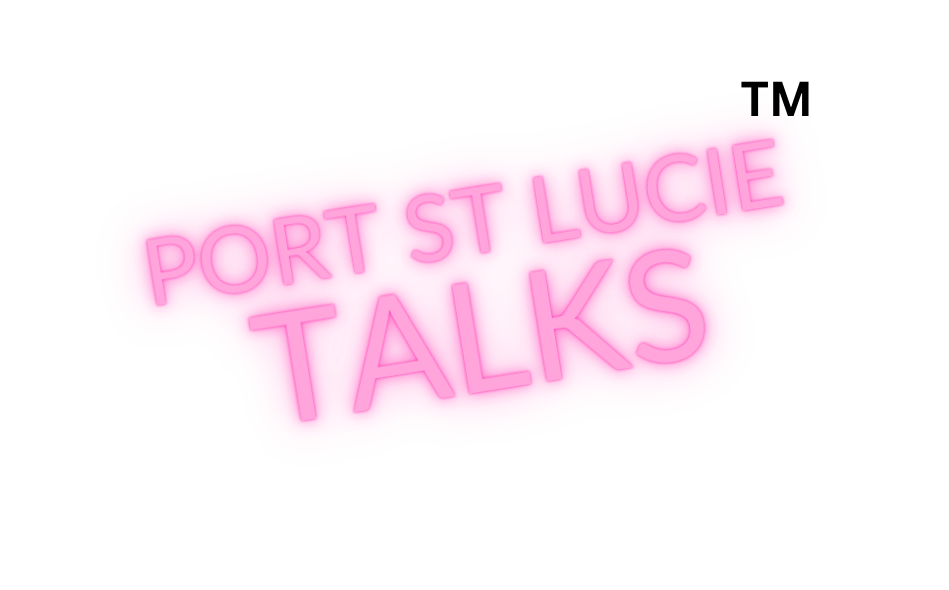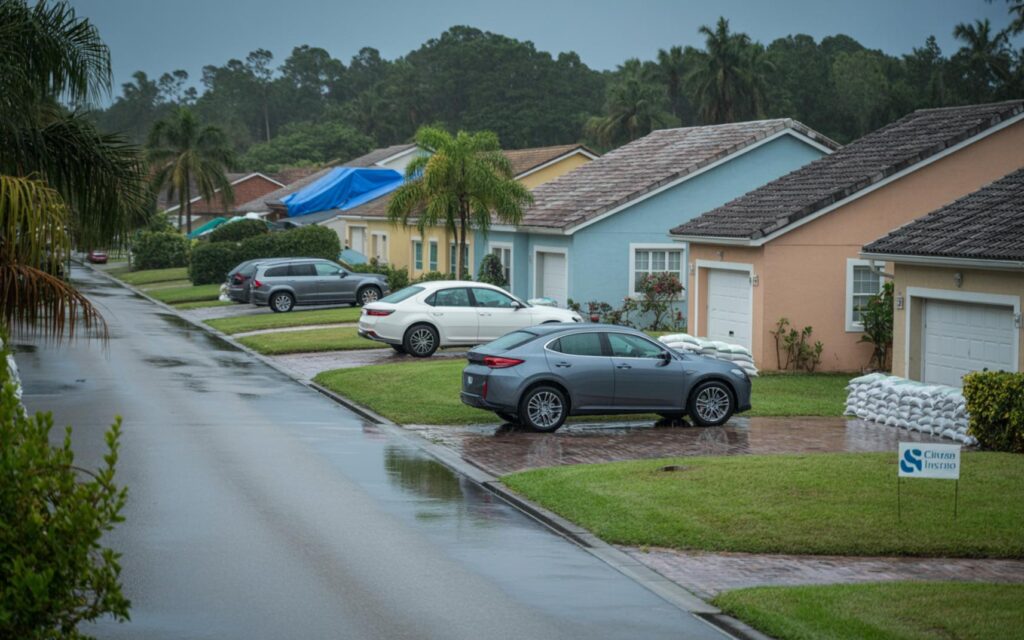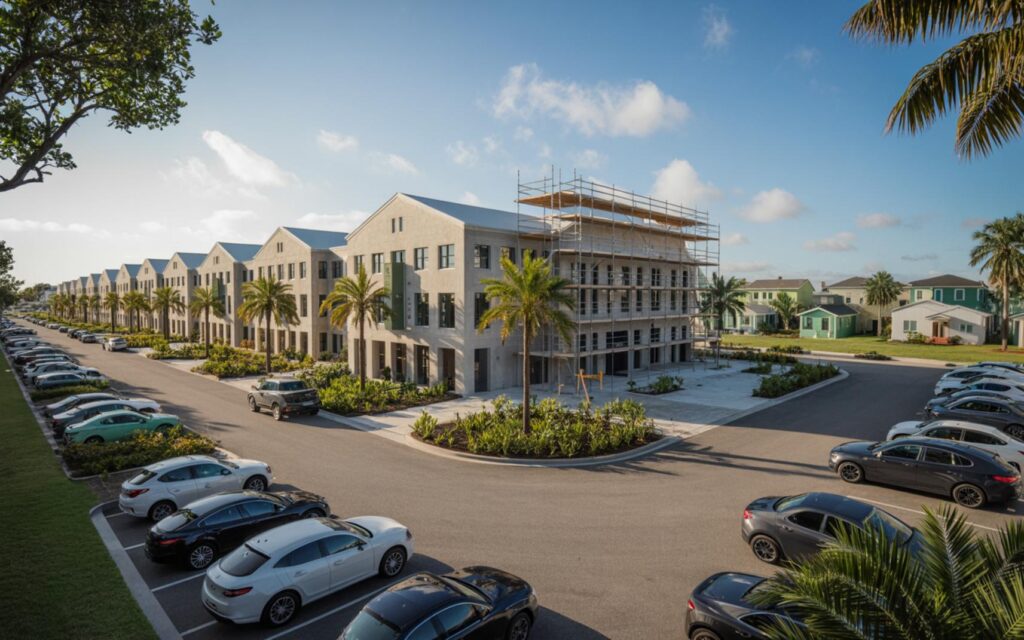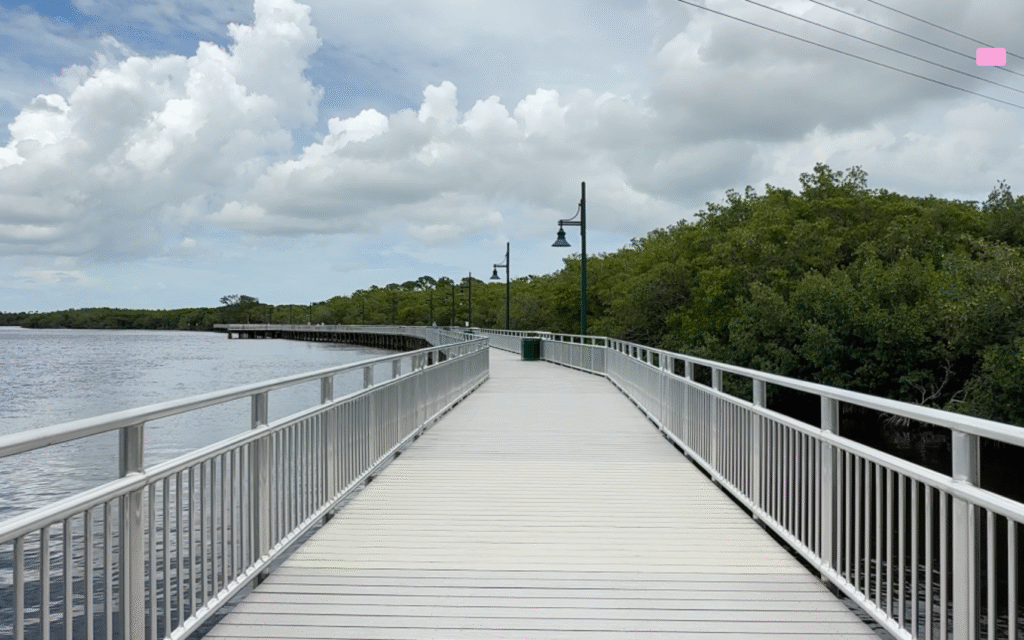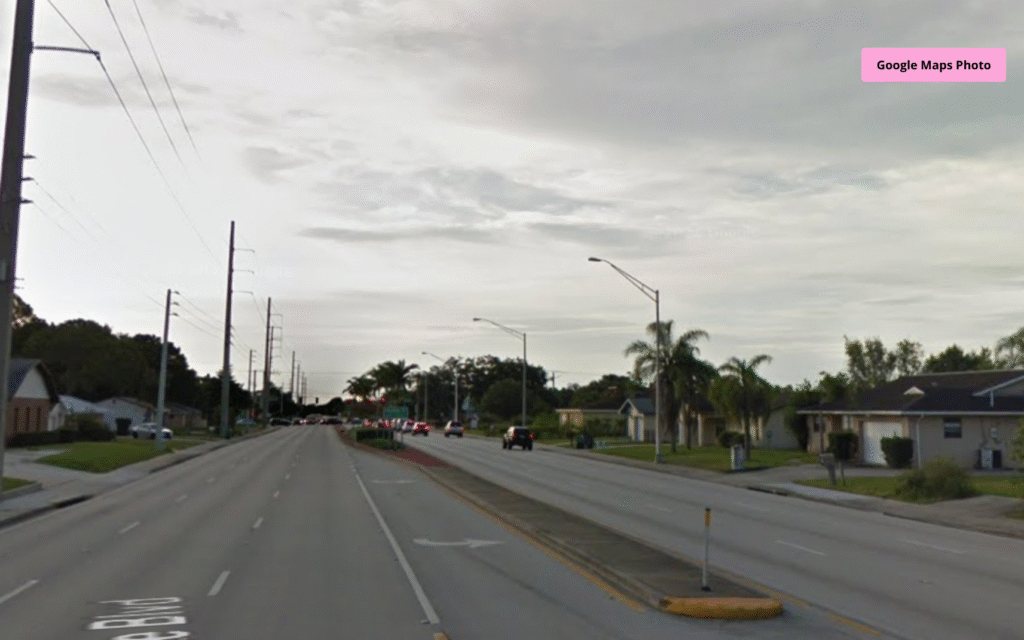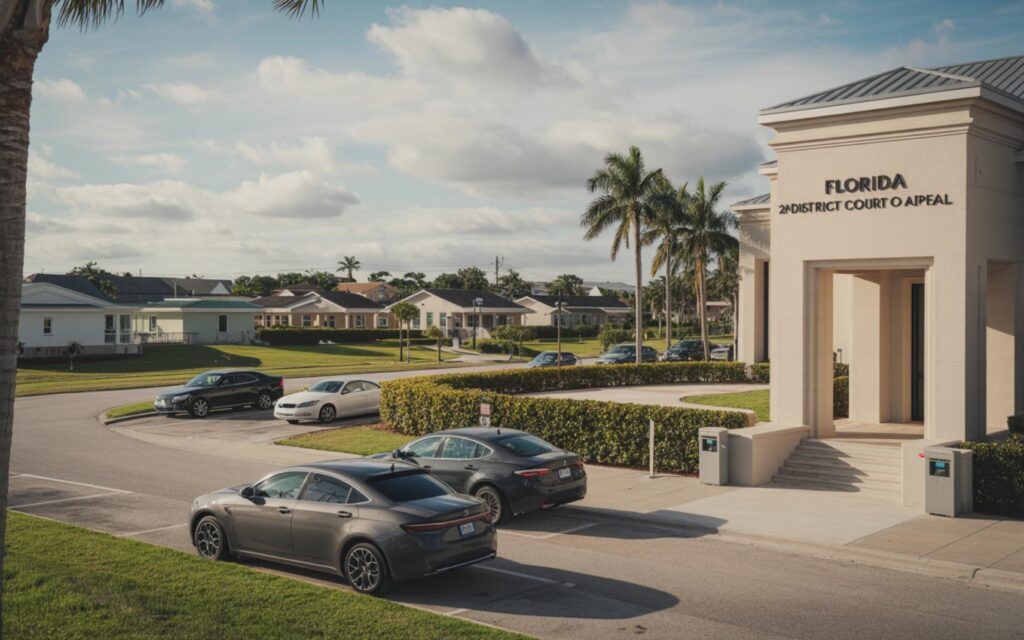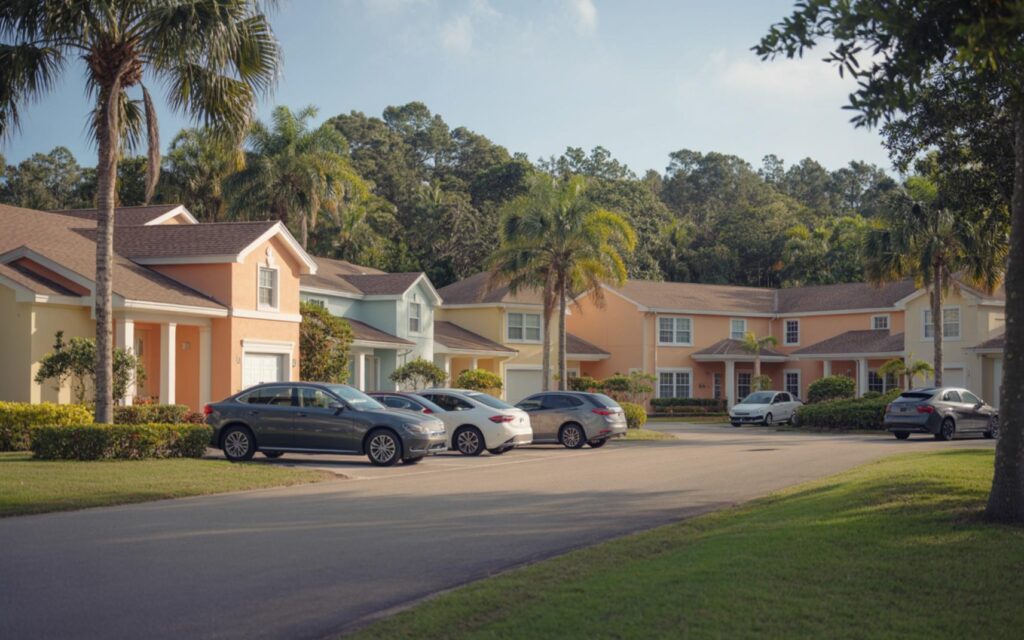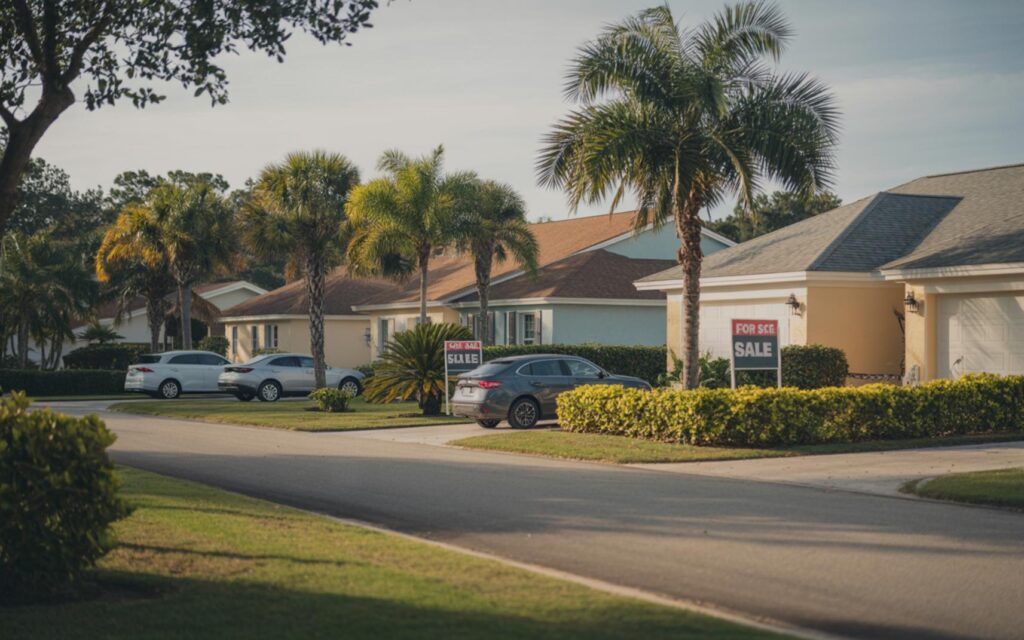Florida home insurance crisis has reached unprecedented levels, with average premiums now among the highest in the United States. Homeowners across the state are facing soaring costs, shrinking coverage options, and growing uncertainty about the future of property insurance.
Florida Home Insurance Crisis: Key Facts and Recent Trends
Florida’s home insurance market has experienced rapid changes in recent years. According to industry data, the average home insurance premium in Florida has climbed to over $3,000, with some estimates for standard coverage reaching $5,376. This is more than double the national average.
Premiums have surged by 34% in the past year alone. Projections indicate that average annual costs could rise to $15,460 by the end of 2025. The number of active home insurance policies in Florida has dropped by 78% over the past decade, reflecting the market’s instability.
The state-backed insurer, Citizens Property Insurance Corporation, now covers around 63% of the market, a sharp increase from just 6% ten years ago. Non-renewal rates for home insurance policies have nearly tripled in five years, with a 280% increase from 2018 to 2023. Approximately 20% of Florida homeowners are now uninsured, according to official sources.
Factors Driving the Florida Home Insurance Crisis
Several factors have contributed to the crisis in Florida’s home insurance market. The state is highly exposed to hurricanes and severe weather, making it one of the riskiest areas for property insurance in the country.
Florida has experienced over $50 billion in insured losses from catastrophic events since 2017. Hurricane Ian alone caused $65 billion in insured losses, according to insurance industry reports. These frequent and severe disasters have put significant strain on insurers.
Reinsurance costs for Florida insurers have risen by 30-50% in recent years. Insurers in the state now spend 50-60% of premium dollars on reinsurance, compared to 25-30% in other states. Building material costs have increased by more than 35% since 2020, and construction labor costs are up 20-25%, further driving up claims and premiums.
Legal and Regulatory Challenges
Florida’s insurance market has also been destabilized by high litigation costs, insurance fraud, and regulatory challenges. Private insurers have increasingly withdrawn from the market or become insolvent, leaving homeowners with fewer options and higher costs.
The state’s insurer of last resort, Citizens Property Insurance Corporation, was designed as a temporary safety net. However, it has become the dominant provider as private carriers exit the market.
Current Developments in Florida’s Home Insurance Market
New policies written by private insurers in Florida have collapsed, dropping 77% in recent years. Many homeowners face non-renewals or must accept less favorable terms at renewal, according to industry data.
Legislative reforms have been enacted to address litigation abuse and encourage insurer participation. However, the impact of these changes has been limited so far, and the market remains unstable.
Underwriting delays are common, and many buyers find only one or two insurers willing to provide coverage, especially in coastal or flood-prone areas. The crisis is also affecting the real estate market, as high insurance costs and limited availability deter homebuyers and complicate mortgage approvals.
Impact on Homeowners and the Real Estate Market
The affordability and availability of home insurance are now major concerns for both current and prospective homeowners in Florida. According to official sources, about 20% of homeowners are currently uninsured.
The insurance crisis has broader economic implications, including impacts on property values, mortgage lending, and local government finances. High insurance costs can make it difficult for buyers to qualify for mortgages, while rising non-renewal rates create uncertainty for existing homeowners.
Expert Perspectives on the Florida Home Insurance Crisis
Industry experts describe Florida’s insurance market as being in a state of crisis, driven by a combination of climate risk, escalating reinsurance costs, and systemic legal and regulatory issues. There is growing concern that large parts of Florida are becoming effectively uninsurable by private carriers.
The dominance of Citizens Property Insurance Corporation is viewed as unsustainable in the long term. Many experts believe that without significant changes—such as further legal reform, improved building standards, and possible federal intervention—the crisis will continue to worsen.
Some experts warn that Florida’s situation could foreshadow similar problems in other high-risk states as climate change intensifies. The state’s experience highlights the challenges of providing affordable and reliable home insurance in areas exposed to frequent natural disasters.
Broader Context: Climate Change and Insurance Availability
While the crisis is most severe in Florida, other states with high climate risks are also facing challenges in the home insurance market. The combination of frequent natural disasters, rising costs, and market instability is making affordable coverage harder to obtain in many areas.
Climate change is expected to increase the frequency and severity of hurricanes and other extreme weather events. This trend will likely put further pressure on insurers and homeowners, raising questions about the future of property insurance in high-risk regions.
According to official sources, the affordability and availability of home insurance are now major concerns for both current and prospective homeowners throughout Florida. The insurance crisis has broad economic implications, affecting property values, mortgage lending, and local government budgets.
Frequently Asked Questions About Florida Home Insurance Crisis
What is the Florida home insurance crisis?
The Florida home insurance crisis refers to rapidly rising premiums, fewer coverage options, and a growing number of uninsured homeowners. The crisis is driven by hurricane risk, high reinsurance costs, legal challenges, and insurers leaving the market.
How much have Florida home insurance premiums increased?
Florida home insurance premiums have increased by 34% in the past year. Some estimates show average annual premiums over $5,000, with projections suggesting costs could reach over $15,000 by the end of 2025.
Are there fewer private insurers offering home insurance in Florida?
Yes, the number of private insurers writing new policies in Florida has dropped sharply. Many companies have left the market or stopped accepting new customers, leaving Citizens Property Insurance Corporation as the main provider for many homeowners.
Can you get home insurance in coastal or flood-prone areas of Florida?
It is possible, but many buyers in coastal or flood-prone areas find only one or two insurers willing to offer coverage. Some homeowners face non-renewals or must accept higher premiums and less favorable terms.
Where are the highest home insurance premiums in Florida?
The highest home insurance premiums in Florida are typically found in coastal regions and areas most exposed to hurricanes. These locations face the greatest risk, leading to higher costs and fewer coverage options.
